In the Siena region and neighbouring Chianti Classico territory, Amy McPherson meets a group of passionate Tuscans whose love for their land is creating a lifestyle and production choice of returning to the basics
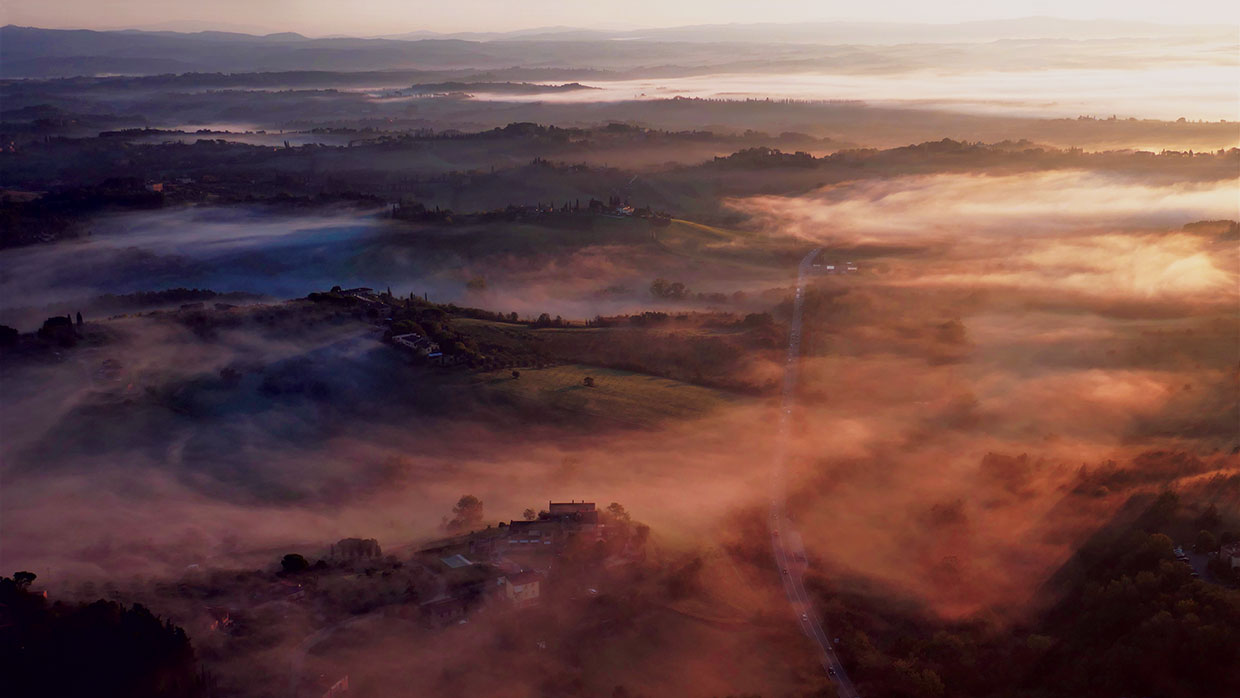
Giovanni Stella never thought he’d become a winemaker. “I wanted to go fishing!” he admits, arms waving like a conductor of an orchestra.
Giovanni started working in the wine trade at the age of 15, at an age when Italian children must choose the school of their future profession.
“At the time, I had no idea what I wanted to do,” he explained, “so I chose the school that had the longest study, which was winemaking, only to give me time to think about what I want to do with my life!”
Coincidently, Giovanni’s father knew someone who owned a winery, and Giovanni went along to work for him for the reason that there was a pond in the middle of the vineyards where he could go fishing.
But noticing how passionate the winemaker was in the production process and the care he took to ensure the quality of his wine, Giovanni took the chance to make his work experience a career.
Today, at the age of 33, he is a consultant winemaker who works across wineries on returning to basics, producing organic and low-sulphite wines of the Chianti Classico region.
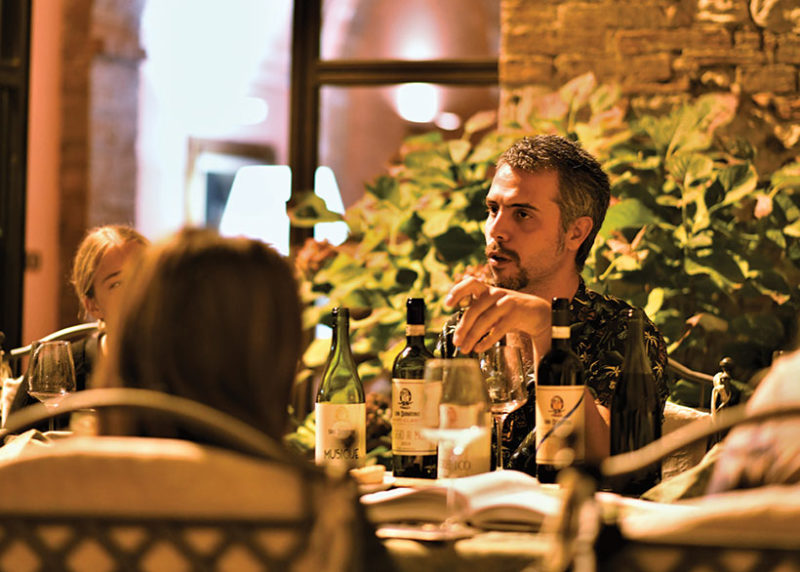
A taste of Chianti Classico
At the Caparsa Winery in Radda in Chianti, I learned that Chianti and Chianti Classico are two different wine regions.
Paolo Cianferoni traced the jagged border of Chianti Classico, which is within the Chianti region, and explained that this was the ‘original Chianti’, before wine production became commercial internationally.
The main difference between Chianti Classico and Chianti is that the wines are made with quality in mind, not quantity.
“The Chianti Classico area is actually many, many different wine regions,” Paolo explained, making a finger point with his free hand as he poured me a small tasting glass of his Chianti Classico Riserva with the other.
“There are so many different altitudes, soils and climates just in Chianti Classico territory. Even if my neighbour uses the same grapes and the same method to make wine, I can guarantee you, our wines will be very different.”
I tried the wine, a 2017 vintage that is voluminous in body, complex in flavour and smooth in texture.
In total, we tried twelve different styles and vintage that Paolo and family produces. By the end I’ve lost count of how many times I’ve thought, “Oh, this is my favourite.”
In Chianti Classico, wines must be made with minimum of 80 percent Sangiovese, a grape considered to be the Tuscan staple. Even so, the grape is in fact the child of the ancient Ciliegiolo of Tuscany and Calabrese Montenuovo of Sicily.
Agricultural processing over time has mixed and blended the DNAs of everything we produce so that, today, much of what we consume is ‘modern’ crops that are often fragile to the environments they grow in and not necessarily healthy in the long term for nature and the creatures that live in it.
Caparsa Winery makes 100 percent Sangiovese wines. Cultivating only Sangiovese on organic land to make wine is Paolo’s way of controlling the extent of that change, to try to keep using what grows naturally as much as possible.
The more time I spend in Tuscany, the more I notice the people’s common sentiment of wanting to return to our food’s natural origins.
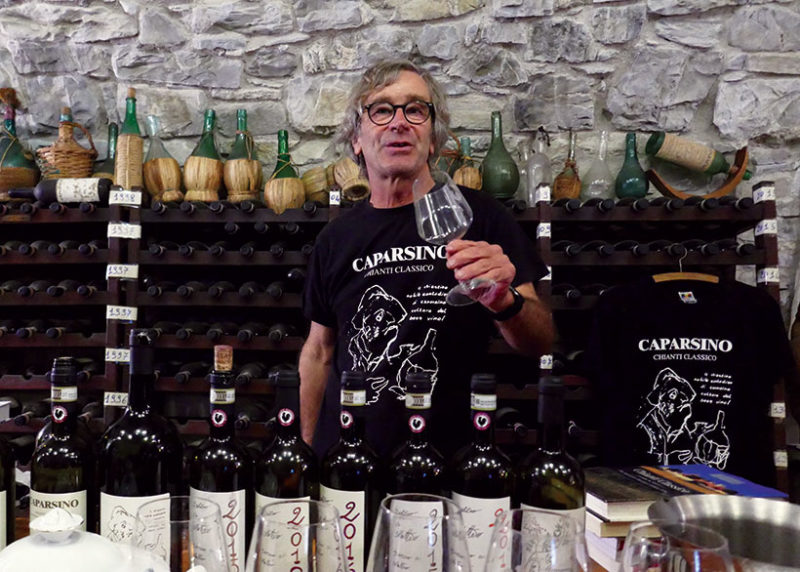
Back to basics in Siena
“I think in Tuscany, especially in the Siena region, since we have some of the oldest agricultural heritage in Italy, the people feel a lot more bonded with our land,” says Salvatore Barrese, landowner, farmer and producer of ancient grains.
“By going back to what grows naturally, it is good for the land, which means the product is also good for the people.”
Salvatore started this journey of farming ancient grains back in 2001 for himself. But it took several years of organic land conversion before he could produce crops that could be certified as organic.
When I asked him what the first thing he made was when he harvested and milled his first crop, he laughed. “Well, pasta, of course!”
That night, we were served pasta made from Salvatore’s ancient grain flour.
Pasta made from the ancient grain is darker in colour, more digestible and easier on the stomach. You can also taste the flavour of the grain a lot more.
Throughout the centuries, grain crops have evolved and been modified for human consumption. The wheat and rice we eat today have been transformed by humans to be suitable for production, not necessarily considering the impact on the grain’s growth and the environment around it.
Now a new generation of producers is going back to basics, return to organic farming methods and cultivating ancient grains, to work with nature and grow what is natural to the environment.
“I strongly believe,” said Salvatore, making his final remarks before leaving us to savour dinner, “that if nature is happy, if we grow crops that are natural to the environment and to us, humans will also be healthier, and happier in many ways.”
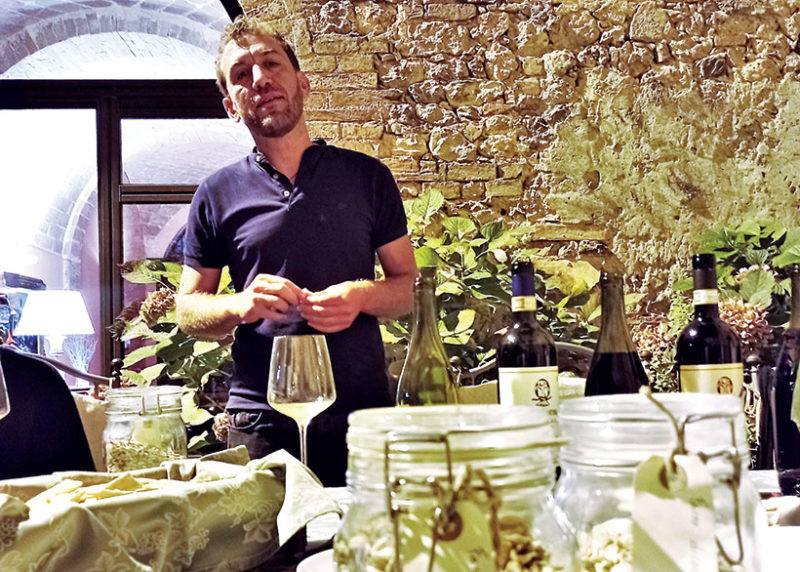
Learning to love the land
Ennio Polito grew up in the villa that is now Palazzo Cheto, a beautiful private villa restored from a 13th-century monastery that offers guests an exclusive retreat among the Tuscan hills around Siena.
“You know, these trees were already here when I was little.” Ennio took me mushrooming one morning and told me this as we zigzagged between the small beech and fir forest on his estate.
“But growing up, I was never interested. I just wanted to play PlayStation!”
Bending down to inspect a potential porcino, he gently stabbed the mushy underparts of the pores and shook his head.
“Nope, this one might look like a porcino but it is poisonous. See how the colour changes when I bruise it? No good.”
As he got older, he developed an appreciation of the land, of nature, and learned foraging from his friends. “The more I learned, the more I respected nature,” he says.
“In fact, there is a lot nature can teach us. We just have to learn to listen.”
After two hours of wading among branches and gossamer spider’s webs, we returned to the villa, where our private chef, Christina, clapped her hands in joy as she inspected our bounty of four porcini mushrooms and one Caesar’s mushroom.
To reduce the carbon footprint of the food consumed by guests, meal time at Palazzo Cheto is a celebration of locally grown (and foraged) seasonal produce and home-cooked delights.
The villa even produces its own olive oil from the trees that surround the poolside, and picking time is always a party at the property.
“I feel so proud to be Tuscan, especially from this region of Tuscany,” Ennio sighs post-lunch as we gaze towards the Siena skyline visible from the villa’s garden. “And I love what I do here at the villa because I can share my piece of Tuscany with my guests.”
“There is a lot nature can teach us. We just have to learn to listen.”
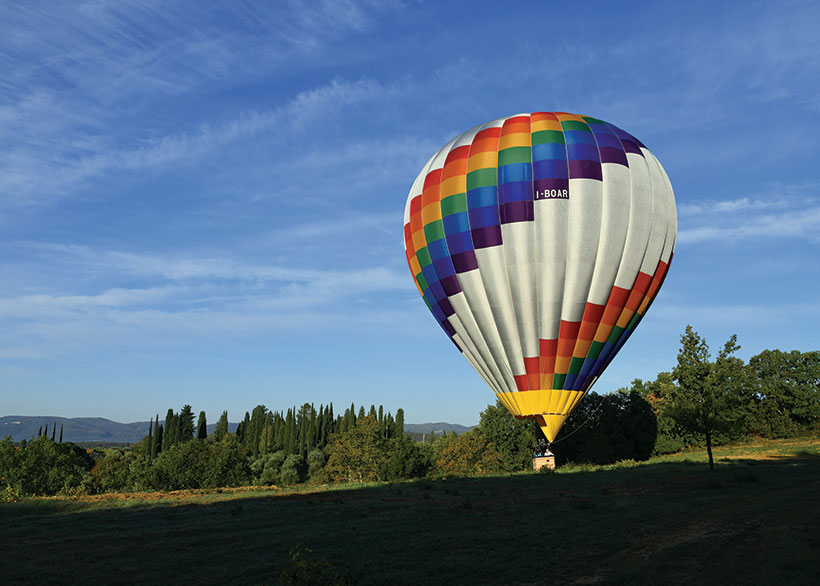
Tuscany from above
Our last view of Tuscany was from the height of a hot air balloon, floating quietly in the sky above Siena.
The sun was just rising, revealing the land that varied from wooded patches to grassy hills to the clustered urban centres pin dropped by the towers so well-known in the celebrated Tuscan landscape.
From here, I could see the ‘micro-climates’ created by the light and shadows playing among the curves of the land.
I could see how human influence has created concrete oases disrupting nature’s Eden. I could see why a new generation of passionate Tuscan growers and producers wants to return to ancient origins and work with what nature is naturally good for.
From winemakers to grain growers to villa owners, their enthusiasm is contagious – enough for me to want to be part of it, part of this territory.
But for now, as the morning mist begins to lift, revealing Siena below, the sunlight washing the surroundings in a radiant glow, I lean back on the basket of the balloon, let my mind go and breathe in the passion of this land worthy of a Puccini aria.
Read more blogs in our travel archive
Words © Amy McPherson
